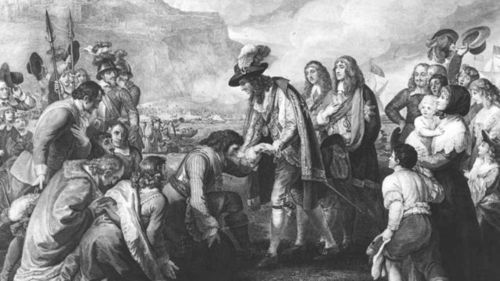Annotation:Barham Down (1): Difference between revisions
(Created page with "=='''Back to [[{{BASEPAGENAME}}]]'''== ---- <p><font face="garamond, serif" size="4"> '''BARHAM DOWN [1].''' English, Country Dance Tune (6/4 or 3/2 time). D Major. Standard t...") |
No edit summary |
||
| Line 5: | Line 5: | ||
<br> | <br> | ||
<br> | <br> | ||
The | The Playford family were Royalist sympathizers during the Commonwealth period, and welcomed the Restoration in 1660. This tune would seem to celebrated that, as Barham Down was the place in Kent where the nobility welcomed Charles II from his exile in France. Perhaps not incidentally, Barham Down the legendary scene of King Arthur's last and greatest conflict with Mordred.[[File:barham.jpg|500px|thumb|left|]] | ||
<br> | <br> | ||
<br> | <br> | ||
Revision as of 21:27, 30 August 2016
Back to Barham Down (1)
BARHAM DOWN [1]. English, Country Dance Tune (6/4 or 3/2 time). D Major. Standard tuning (fiddle). AABB. Barham Downs, Kent, lie just to the north of the village of Barham, estabished in Saxon times. The tune was originally published in Henry Playford's Dancing Master [1] (11th edition, 1701), and continued to appear in the long running series until the end, with the 18th edition in 1728 (published at that time by John Young).
The Playford family were Royalist sympathizers during the Commonwealth period, and welcomed the Restoration in 1660. This tune would seem to celebrated that, as Barham Down was the place in Kent where the nobility welcomed Charles II from his exile in France. Perhaps not incidentally, Barham Down the legendary scene of King Arthur's last and greatest conflict with Mordred.

Source for notated version:
Printed sources: Barlow (Complete Country Dances from Playford's Dancing Master), 1985; No. 413, p. 96. Barnes (English Country Dance Tunes), 1989. Christian (The Playford Assembly), 2015; p. 6.
Recorded sources: Varrick C-VR-013, Bare Necessities - "English Country Dances" (1987).
